Silent staff: 5 BIG reasons we need to be engaging front-line or non-desk employees
75% of today’s employees are non-desk workers. However, in an age of digital communication, they’re being left out of the loop. When radio silence causes your staff to feel like second-class employees, the damage could be greater than you think.
Reaching and connecting with employees is vital to business success. Informed employees are more engaged and invested in the organization’s purpose and direction, and even just at a basic level, can be reached during times of need or crisis. But what happens when up to three-quarters of your staff are out of reach?
Non-desk workers range from your warehouse and factory workers to your delivery drivers and shop floor staff. They’re the bloodline of your business. But if you have a large proportion of staff who aren’t sat at a desk, what happens when you can’t get the message out and keep them connected? Why is it so important to engage our staff – ALL of our staff, not just the easy-to-reach?
#1. They know your business
Being able to tap into those who really know your business is critical to resolving challenges and keeping your organization evolving and growing. Who knows your business better than those in the field, delivering your goods or services?
In one great example, Interact customer South East Water – a water supplier, responsible for 2.2 million customers in the South East of England – faced significant challenges engaging their front-line staff.
These were the workers servicing the 9,000 miles of water mains pipes, the engineers dealing firsthand with challenges out in the field. Due to the very nature of their work, they were often disconnected and without access to computers in their day-to-day work.
Management at South East Water sought to engage these subject experts through their intranet, Gurgle.
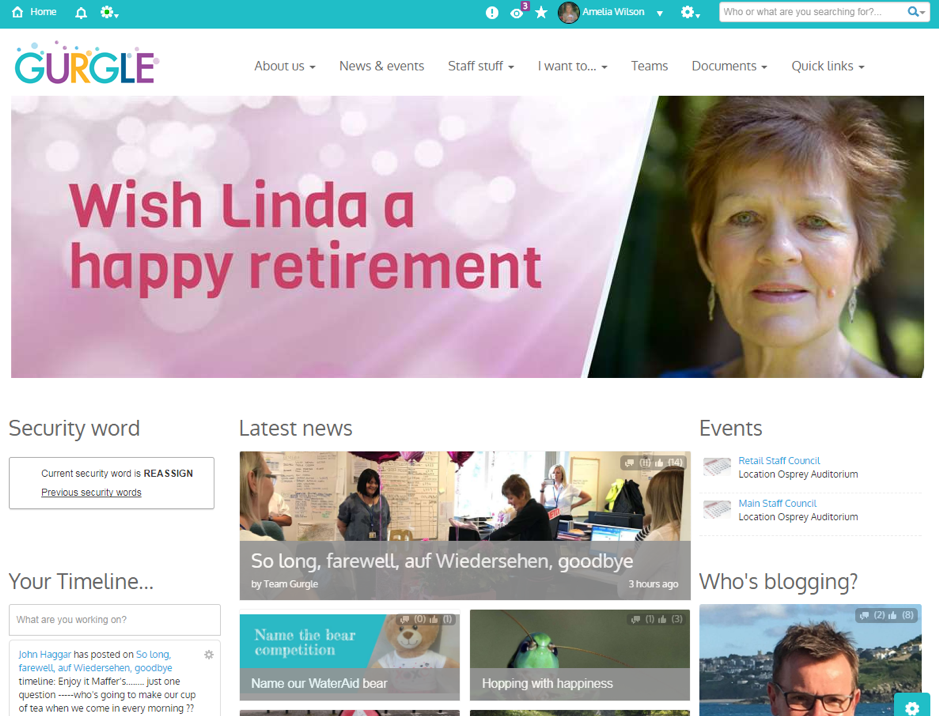
A mobile-first design meant the intranet was accessible on-the-go; use of forums that rewarded or recognized the contributions of front-line staff encouraged adoption.
Pipe Up! Was the central ideas generation network created by staff from across the business, offering a way for grass-roots employees to put forward suggestions to senior management, share best practice ideas, and come together to collaboratively resolve common challenges.
To take the ideation practice one step further, a monthly ‘Mains event’ is used for senior management to present a challenge to users and ask for their ideas and support. Ideas put forward are recognized with a virtual ‘high five’ reward, with the winning suggestion securing a voucher or cinema tickets to spend.
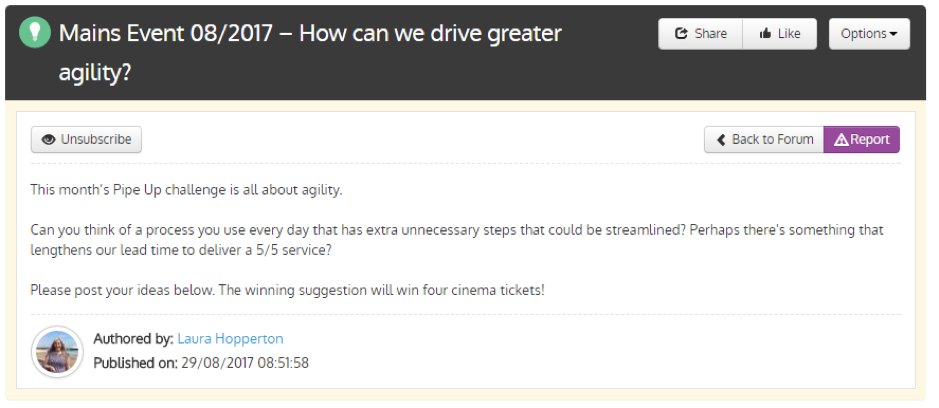
The result? Staff feel valued and are empowered with a voice, while management gains access to valuable insights from those dealing firsthand with the challenges facing their staff and customers.
#2: They – and you – are at risk if they’re uninformed
Ensuring your staff are complying with regulatory requirements and adhering to best practices is critical to safeguarding your business and its people.
If you have front-line staff who aren’t aware of changes in policy, who don’t know risks that have been identified and could have implications for their roles or who simply haven’t signed that latest compliance document, you’re vulnerable to everything from expensive inefficiencies to health and safety incidents, legal action, and more.
Non-compliance costs, including fines, business disruption and losses in productivity and revenue, cost around $14.82 million annually on average.
If you’ve got disconnected staff without easy access to a computer, how do you ensure they’re up-to-date with the latest compliance and legal requirements?
It’s time to do away with paper-based forms and the age-old ‘read, sign, and post it back’ approach. E-signatures and online processes for compliance are now accepted as standard and even for those offline employees, there are practical workarounds. The fact of the matter is that relying on dispersed staff to actually read – let alone return – paper-based legal or compliance information is a resource-intensive and often insufficient approach.
A mobile intranet with Mandatory Read functionality may be the solution. While 75% of your staff may be non-desk-based, 95% of all US and UK citizens own a cellphone of some kind (Pew Research Center). This doesn’t even need to be a work device; with the right intranet provider, accessing your organization’s intranet on the go from a personal device can be secure, quick, and easy. Interact offers a mobile-first and fully responsive platform, alongside native apps for both Android and iOS.
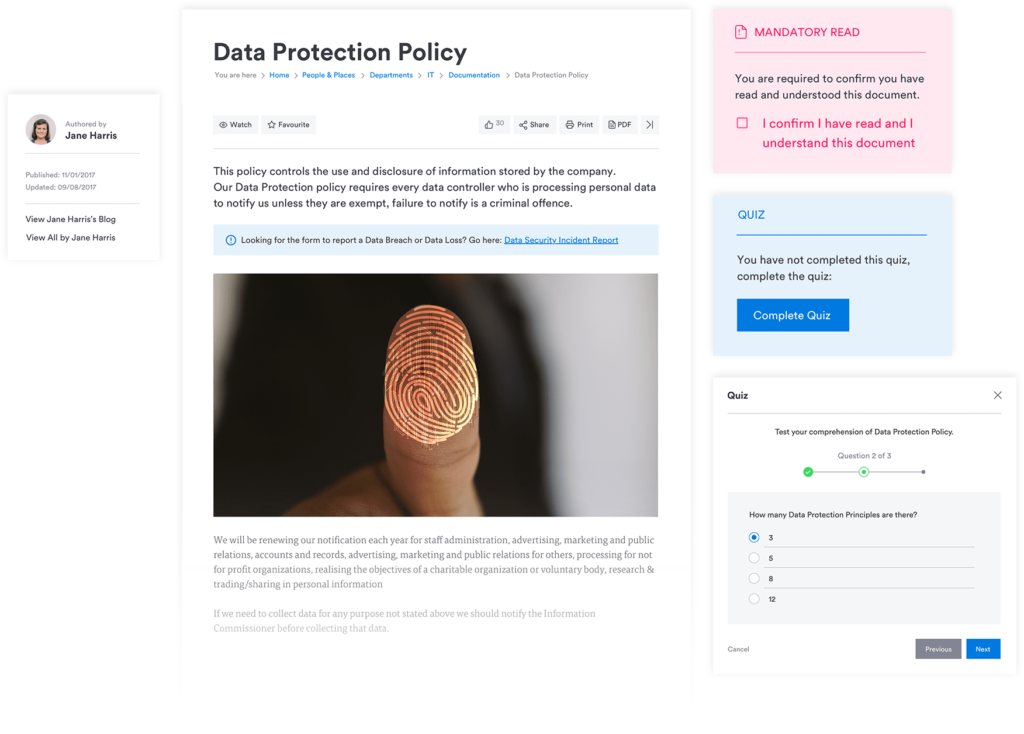
The Interact Mandatory Read functionality is designed to not only provide staff with important information, hosted on the intranet CMS, but to provide a fully trackable way of pushing critical information out, asking individuals to confirm they have read and understood it, and even testing their knowledge using quizzes. Analytics can show who has completed the task and reminders can be sent out via email or push notification to those who have yet to acknowledge the information.
#3: They are your brand and the face of your customer experience
In a world of TripAdvisor and Google Reviews, up to 89% of organizations compete primarily on the basis of customer experience. A single review can make or break an organization; and those on the front line delivering that experience for your customers are the key to getting that 5-star feedback.
If your employees aren’t committed to your business, deliver inconsistent or insufficient service, or simply face feelings of isolation and disconnect, that will have implications for your brand and how customers feel about your organization.
This was one of the challenges facing global financial services provider, Travelex. With staff based in 1400 bureaus across 70 countries – and 75% of employees operating as retail staff, while only 25% were office-based – Travelex had a disconnected global community and wanted to build a sense of belonging across the entire organization.
In 2017 they launched The Lounge.
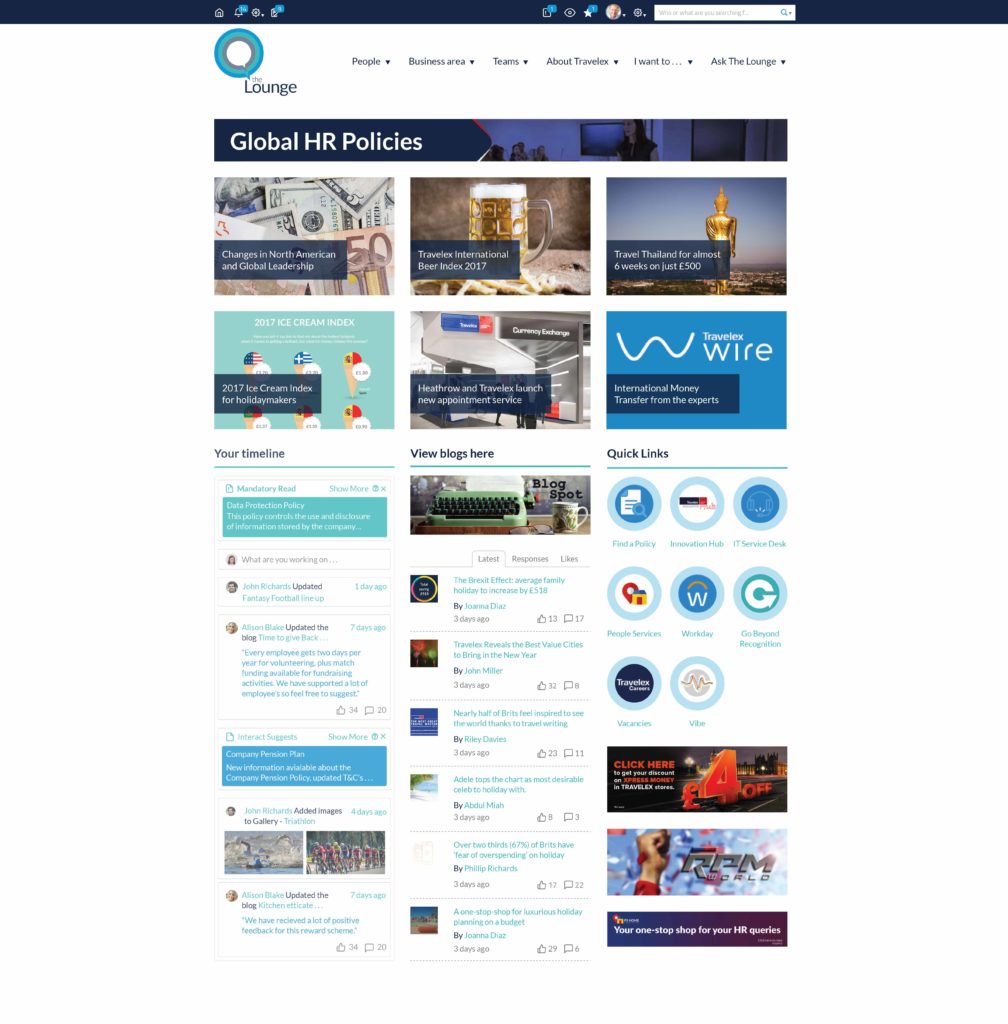
The benefits of The Lounge are two-fold. Colleagues are now able to connect on both a professional and personal level, shown through the huge success of blogs on the platform where staff share personal stories and experiences; the intranet sees an average of 11 blogs posted per day. In addition, the intranet connects staff to business news and encourages them to share experiences. The result is a global virtual culture of innovation, community, and best practices, supporting greater customer experiences.
“Our intranet – The Lounge – has given our colleagues the means to broaden their relationships at work by connecting our people all around the world,” explains Global Intranet Manager, Tricia Scott.
“Today, they can discuss and relate to their co-workers in similar roles on different continents. It’s something that’s now giving rise to more sophisticated use of the platform, where our people are utilizing it to help problem-solve and innovate to fix genuine customer issues, based on the experiences they share with the community.”
#4: They’re costly if disengaged or lacking in purpose and direction
Studies increasingly show that employees are motivated by purpose and meaning in their work.
This is particularly true of the Millennial and Gen Z demographic; the Gallup study on How Millennials Want to Work and Live found that Millennials want to work for organizations “with a mission and a purpose […] compensation is important and must be fair, but it’s no longer the driver. The emphasis for this generation has switched from paycheck to purpose.” Meanwhile, a LinkedIn study finds that 74% of candidates want a job where they feel like their work matters.
On the flip side, the cost of disengaged and unhappy staff is extensive and well-documented; Gallup suggests it averages 34% of a staff member’s annual salary. A disengaged employee earning $60,000 will cost their employer $20,400 a year. This doesn’t even cover the cost of high turnover and replacing employees who leave due to disengagement. What’s more, 59% of employees don’t know what their company stands for and what makes its brand different (Staffbase).
The challenge is if you’re based away from the office and lack visibility of senior management, your organization’s values or mission, its successes, and direction, it’s easy to become disengaged. Individuals who are disconnected will also struggle to understand how their role contributes to or fits into the big picture of an organization.
This was the case for New York Racing Association (NYRA). After several challenging years of financial constraints and negative press, alongside 1,200 staff dispersed across New York State and working on the track, NYRA was having difficulty motivating and engaging staff. Their solution came in the format of a number of different features on their intranet, Inside NYRA:
- News you can use: Handy go-to sections which help staff perform their jobs more efficiently and effectively, and provide information to learn more about the sport.
- Employee Spotlight: Highlighting outstanding performances or introducing members of the team who exhibit role model behavior. It’s also an opportunity to showcase the company’s diversity, featuring staff who aren’t often acknowledged.
- Water cooler: An area that showcases significant employee milestones. Both the ‘Employee Spotlight’ and ‘Water Cooler’ sections give exposure to employees in a way NYRA was unable to do before.
- From the archives: Bringing NYRA’s long and rich history to life with photos. A popular feature includes, ‘A Day in the Life of Belmont Park’, where employees upload photos of their typical working day when a race is taking place.
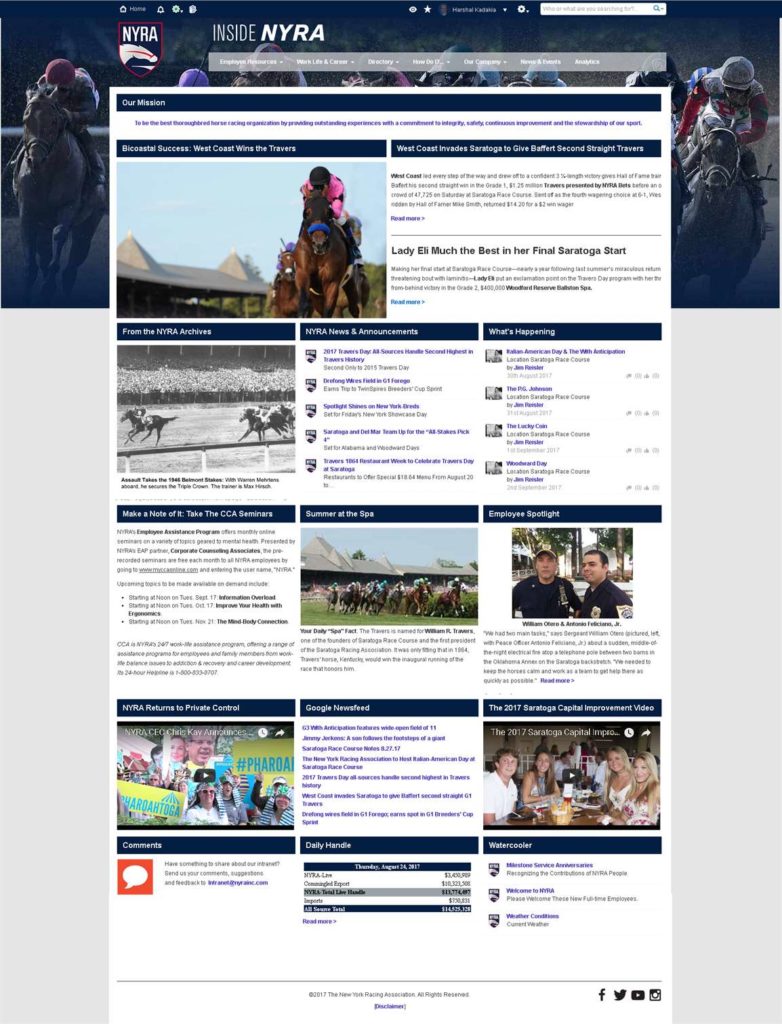
Inside NYRA helps immerse its staff in the sport, tradition, and rich history of horse racing, as well as affording recognition to those individuals who contribute to the organization. Its values and successes are prominently displayed, experiences are shared, and staff can benefit from understanding the purpose of NYRA – and their individual place within it.
We wanted the platform to be an integral part of improving the community and culture of NYRA by sharing the good news. The new intranet would be a way of saying “the old days are over” and of building transparency.
#5: They need to be reached quickly and effectively in times of crisis or emergency
While we hope we’ll never need to face one of those situations impacting our own organization, the truth is that crisis communication is a hot topic.
From extreme weather to security or data violations and even terrorist threats, there is a whole spectrum of different situations that require immediate and efficient communication with our employees to ensure their safety, security, and compliance with response actions. Non-desk and frontline employees can be difficult to contact or simply unaware of the right procedures or actions to take in a crisis situation.
As employers, we have a responsibility and obligation to keep those staff in the loop. The repercussions of failing to do so can be far-reaching, damaging, and even, in extreme cases, fatal.
For Interact customer Acadian Companies, who have over 4,300 staff dispersed across the United States, this need came to fruition during Storm Harvey, which impacted a number of its employees. Providing a centralized hub for employees to get assistance, up-to-date information, and for colleagues to rally together and provide support proved hugely valuable for staff.
The key to crisis communication lies in two elements; planning, and a multi-faceted approach to comms channels. Getting the message out over multiple channels maximizes its chance of being seen and acknowledged; the Interact Broadcast feature is designed to make this process efficient and easy.
A message can be composed within the intranet when urgent communication is needed, with recipients defined or targeted by persona, department, location, or team. Different broadcast modes can be utilized to send the message out, with the reach of your broadcast measured to ensure your workers are getting the message. Most vitally for your non-desk employees, this includes a SMS; 90% of all SMS messages are read within 3 minutes, making this a highly effective and remote-worker-friendly approach.
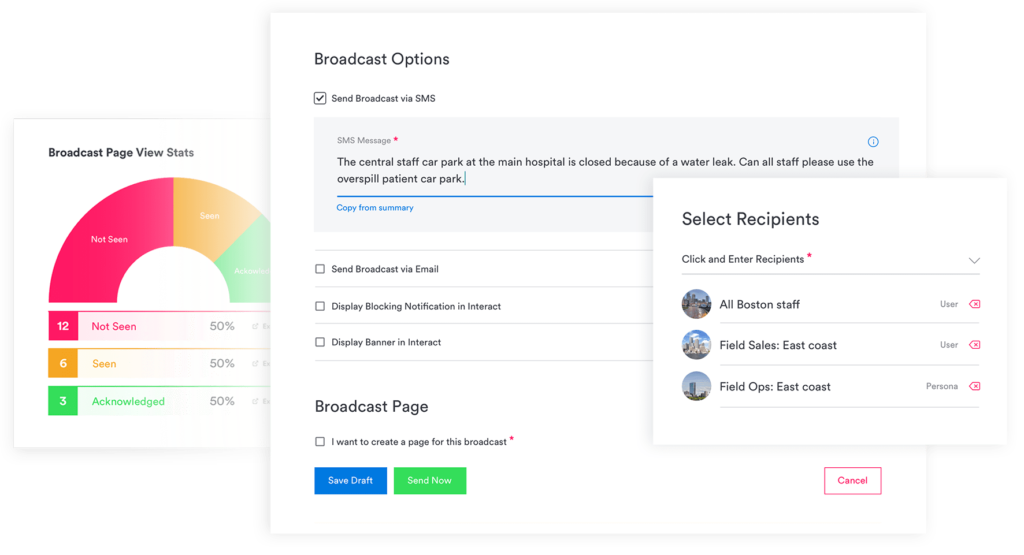
Get ALL your employees involved and engaged
These 5 reasons to connect your non-desk staff are critical, but they aren’t exhaustive.
For the most part, we understand – even intuitively – that communicating regularly with our employees is beneficial; however, the rate of under-communication for this demographic is hugely underestimated. They’re also the group who need it the most.
Taking the time to understand why, how, and when your staff needs internal communication can help to show the value – and potential cost of failing to provide – proper connections between your people and your organization.
